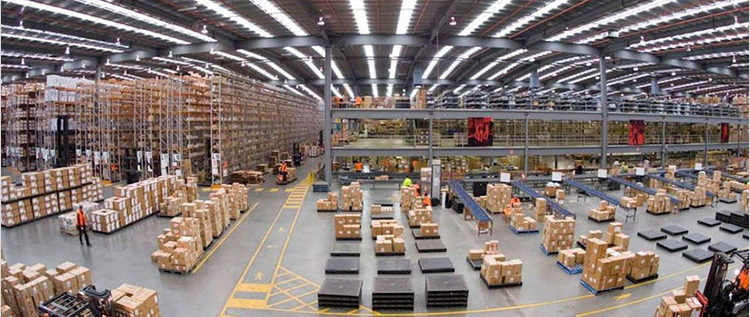E - PAPER
Metamorphosis of Real-estate
Lalit Makhijani, Chief Marketing Officer at Godrej Properties recounts his journey from FMCG and banking to real-estate and briefs on the current developments in the realty sector. Lalit Makhijani with the professional background of working in an American persona
 BY
Realty Plus
BY
Realty Plus
Published - Monday, 06 Nov, 2017

Lalit Makhijani, Chief Marketing Officer at Godrej Properties recounts his journey from FMCG and banking to real-estate and briefs on the current developments in the realty sector.
Lalit Makhijani with the professional background of working in an American personal care corporation and multinational bank made a drastic move of shifting to real-estate sector by joining Kalpataru in 2010 which he laughingly accepts was a culture shock. “It was a bold career move but I felt joining Kalpataru was the right decision. From being a small fish in the big pond, I was now the main decision maker. I was pushed out of my comfort zone but I also learned a lot about the sector.”
The Changing Trends
Commenting on the l changes that the real-estate has witnessed in the past few years, Makhijani said, “The profession of realty has garnered much more respect over the years.Though, there are short term pains for few developers due to RERA but developers like Godrej had always been following the best practices as RERA requires. There is a sea change in the processes and government policies and the sentiments are positive for the sector. The property prices have stabilized and will not go down further. This is the good time for buyers to invest or buy their first homes as home loan interest rates are lower, property prices haven't gone up, developers are offering good schemes and even government is incentivizing to buy houses.”
Shift in Consumer’s Preferences
Till now home buyers were focused on the size of the house, now they are more concerned about the amenities and facilities available within the complex for them and their families. They are even ready to spend more for that. Makhijani explained, “The new generation of home buyers are the young professionals & entrepreneurs, newlywed couples & young parents or those upgrading to a new & better home. These buyers also prefer community living because of which there is a clear inclination towards integrated townships rather than standalone residential buildings. Mumbai, Pune and Bengaluru have seen number of township projects being launched by developers. Even tier-II cities like, Ahmedabad, Kochi, Jaipur and Amritsar and traditional real-estate markets like Chennai and Kolkata are opening up to the concept of integrated townships.”
In post RERA regime, it is not only the large developers that will survive but also the small developers who are doing good and honest work. The intent of the developer should be right. If he is making quality projects and delivering on time, RERA will not disturb such big or small firms.
The Company
While talking to Makhijani at Godrej One, the company’s new global headquarters at Vikhroli in Mumbai, one could see through the glass walls the construction happening around. Makhijani briefed, “The on-going construction is that of - ‘The Trees’, the residential neighbourhood separating the Godrej One and a second commercial office building. The mixed use development spread over 9.2 acres comprising a 5-star luxury hotel, cultural buildings and high-street retail is one of the largest real-estate projects of the company in Mumbai.”
“Godrej Properties is currently developing residential, commercial and township projects spread across approximately 13.70 million square meters in 12 cities. We invest in new technologies, give autonomy to the regional heads and have transparent processes which enable the company to deliver projects before time. As each project is a business unit in itself, the financials incomings & outgoings are also independent and for that project only.”
Concluding the conversation, Makhijani expressed his opinion on affordable housing,” Affordability is a very subjective term that varies for every individual. Thane and Navi Mumbai and even Panvel and Kalyan realty markets are expanding in a big way due to improving infrastructure, better connectivity and reasonably lower property prices than Mumbai. However, one who has always lived in a certain area or locality would prefer to stay in the same neighbourhood even if expensive and buy a smaller residential unit. Even today, buying a house for an Indian is an emotional decision than a financial investment.”
RELATED STORY VIEW MORE
TOP STORY VIEW MORE

Mixed Outlook for Australia's Housing Sector In 2024
Mixed Outlook for Australia's Housing Sector In 2024
05 December, 2024NEWS LETTER
Subscribe for our news letter
E - PAPER
-

CURRENT MONTH 
LAST MONTH














